Complete Calf Raise from Deficit with Chair Support Exercise Guide
Learn everything about Calf Raise from Deficit with Chair Support exercise including proper form, muscles worked, benefits, variations, alternatives, and common mistakes to avoid.
Muscles Worked & Equipment
Primary Muscles
Secondary Muscles
Equipment Needed
Muscle Categories
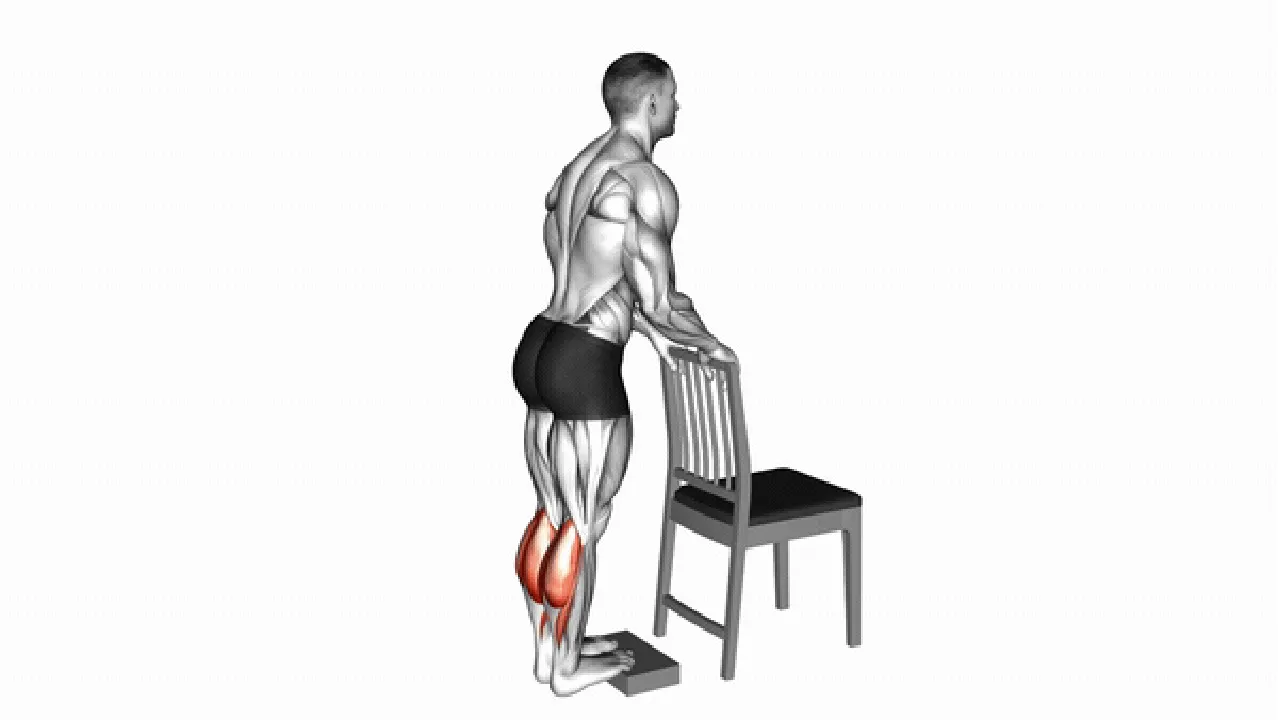
Introduction
1.
Increased Range of Motion: By starting with your heels lower than your toes (on a deficit), you get a bigger stretch and contraction in your calves during the exercise. This makes your calves work harder.
2.
Deeper Muscle Engagement: The increased range of motion means your calf muscles are activated more fully, leading to better results.
3.
Improved Lower Body Strength: Stronger calves contribute to better overall leg strength and stability, which is important for everyday activities and sports.
4.
Enhanced Stability: Stronger calf muscles improve your balance and stability, reducing your risk of falls and injuries.
5.
Athletic Performance Boost: This exercise is great for athletes as strong calves are essential for jumping, running, and other activities.
6.
Works Lesser-Used Muscles: Many people don't work their calf muscles enough. This exercise helps to strengthen these often-overlooked muscles.
7.
Easy to Do: Using a chair for support makes this exercise accessible to people of different fitness levels.
8.
Great Addition to Your Workout: This exercise can easily be added to your existing workout routine to improve your leg strength and overall fitness.
 Zylo AI
Zylo AI
Free Calorie
Counter
App





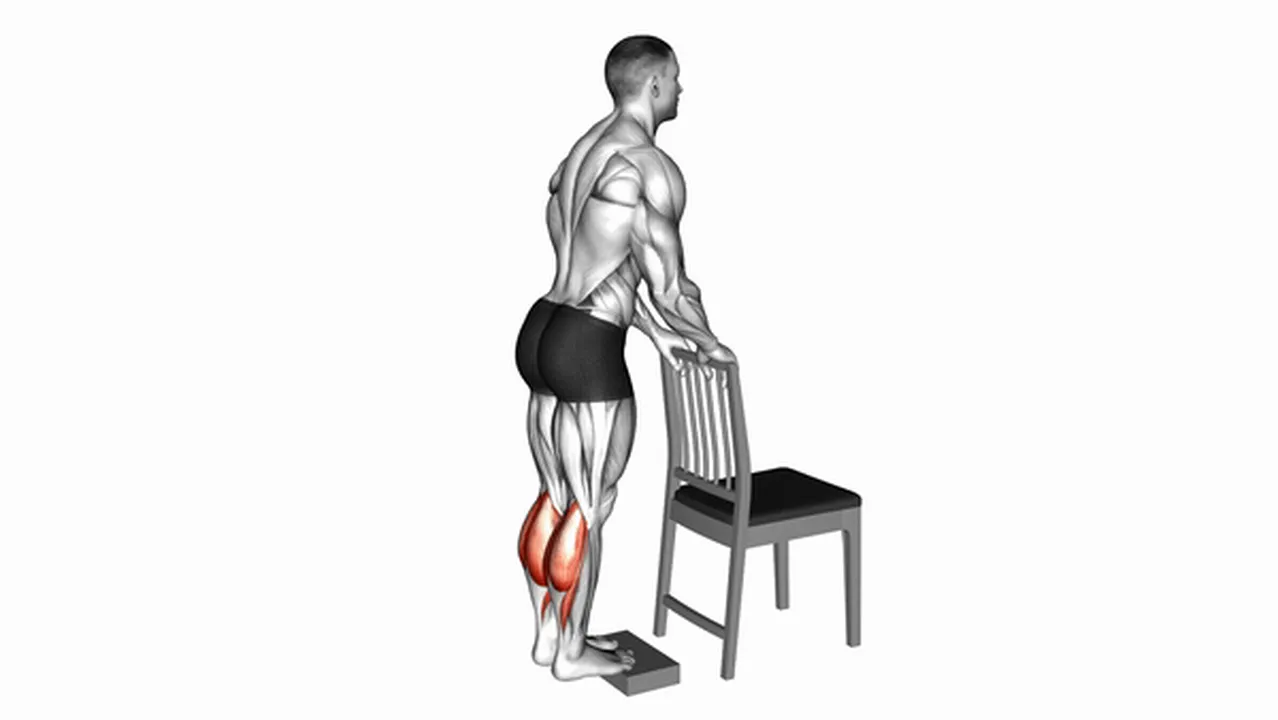
What are the benefits of calf raises from deficit with chair support?
1.
You'll get a bigger stretch because you start lower than usual. This makes your calf muscles work harder.
2.
A chair helps you keep your balance, so it's easier to do, even if you're just starting out.
3.
It helps your calf muscles grow bigger and stronger, giving you more defined calves.
4.
Stronger calves help you run, jump, and do other activities better. This means better performance in sports and everyday life.
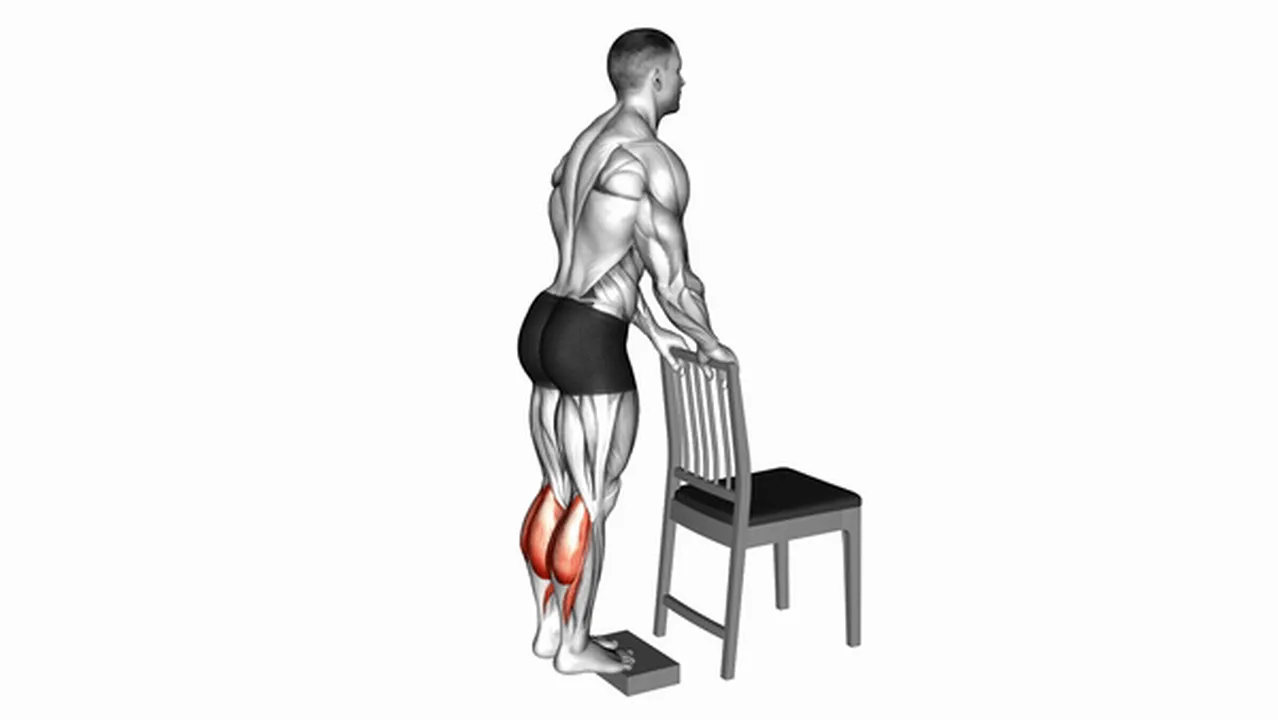
How to do calf raises from deficit with chair support?
1.
Hold On: Grab the back of the chair for balance. This helps you stay steady while you do the exercise. Make sure the chair is stable and won't move.
2.
Go Down Slowly: Lower your heels down, letting them go below the level of the step. You should feel a stretch in your calf muscles.
3.
Push Up: Now, push up onto the balls of your feet, lifting your heels as high as you can. Squeeze your calf muscles at the top.
4.
Pause at the Top: Hold the position for a second or two at the highest point. This helps you feel the muscles working.
5.
Slowly Back Down: Gently lower your heels back down to the starting position. Control the movement, don't just drop your heels.
6.
Repeat: Do 10 to 15 of these up and down movements. Then, rest and do a few more sets (groups of repetitions).
7.
Important Tip: Keep your movements slow and steady. This is more effective than doing the exercise quickly. Focus on feeling your calf muscles work.
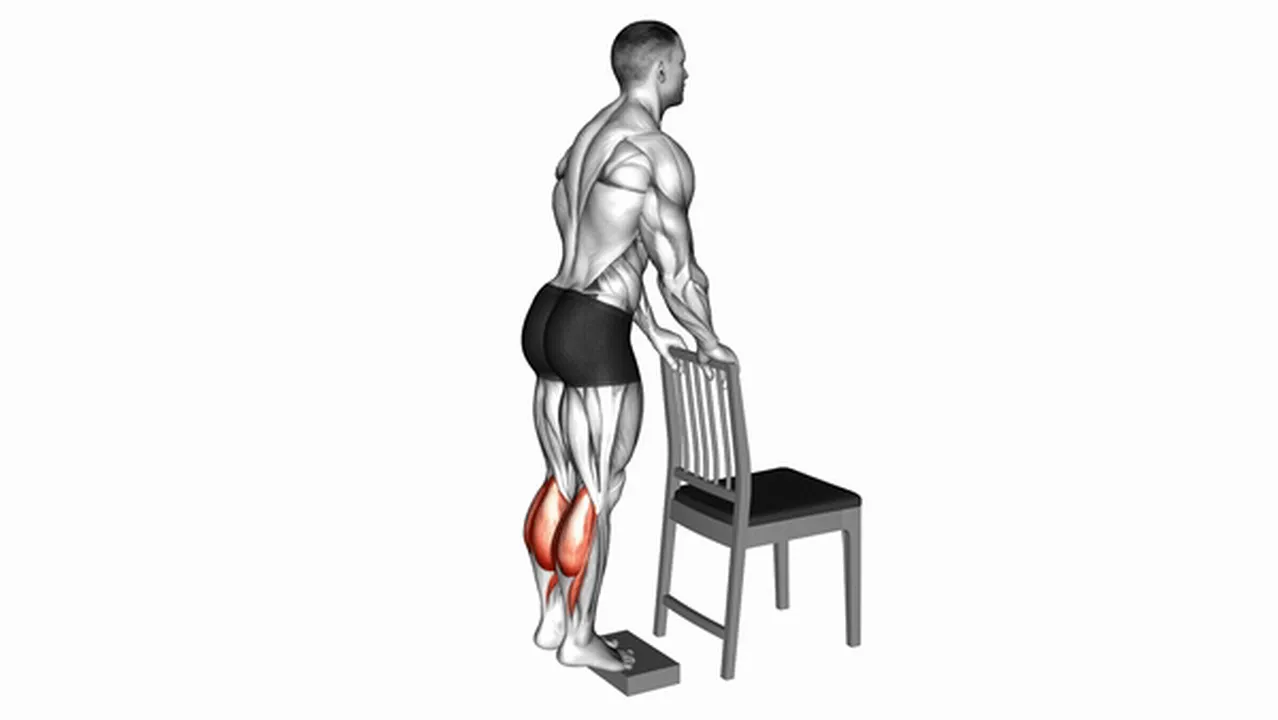
Common calf raise from deficit variations
1.
Lever Standing Calf Raise Machine: This machine helps you lift your heels up and down. It's great because it keeps you steady so you can focus on your calves and lift them as high as possible. This helps your calves get stronger and bigger.
2.
Calf Raises with Resistance Bands: Wrap a resistance band around your feet and do calf raises. The band adds extra weight, making the exercise harder and helping you build more muscle and improve your flexibility.
3.
Seated Calf Raise Machine: This machine lets you do calf raises while sitting down. This is helpful if you have trouble balancing while standing. You can really concentrate on squeezing your calf muscles because you don't have to worry about staying upright.
4.
Each of these exercises works your calf muscles in a slightly different way. Try them all to find what you like best and to make your workouts more interesting!
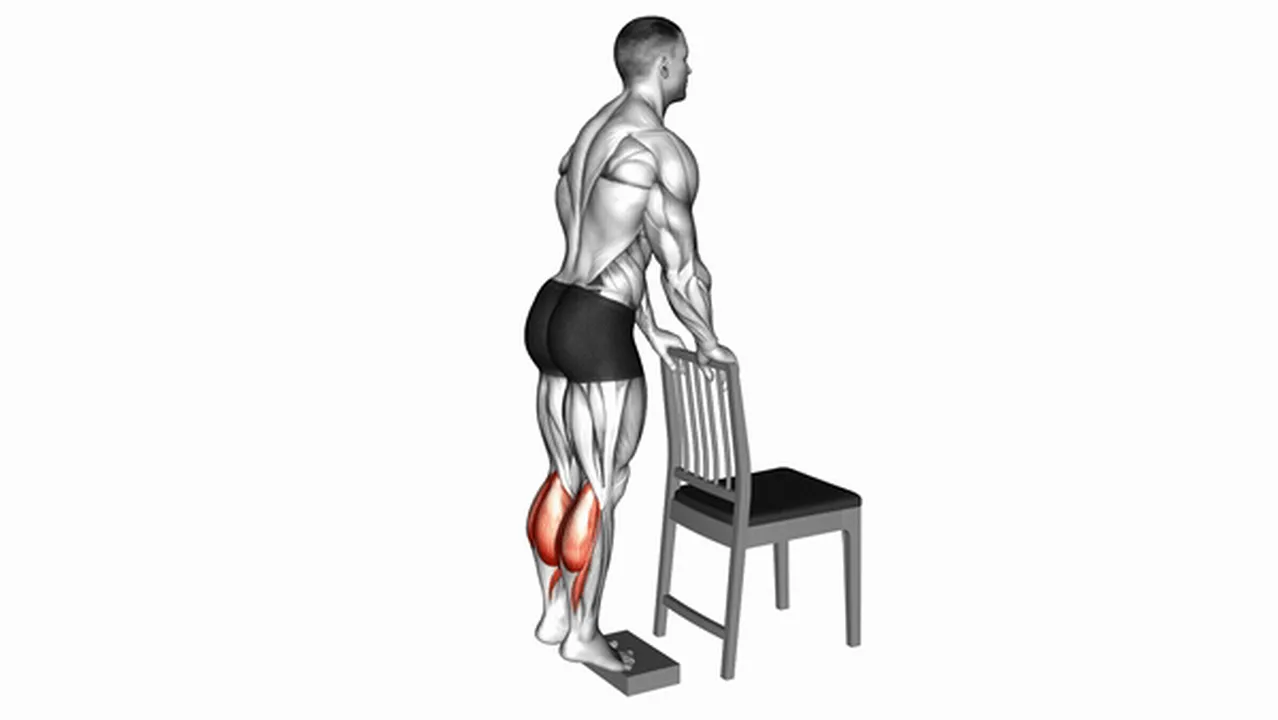
Alternatives to calf raises from deficit with chair support
1.
Smith Machine Calf Raise: This uses a Smith machine for extra support. It's great for building strong calves and improving your balance. The machine helps keep you steady so you can focus on your calf muscles.
2.
Donkey Calf Raise: This one really works your soleus muscle (the lower part of your calf). You'll lean against a pad, which changes how the weight feels and helps isolate your calves.
3.
Barbell Calf Raise: This is a classic exercise. You'll hold a barbell on your back, making it harder and helping you build bigger calves. It also works your core muscles for balance.
4.
Trying different calf exercises keeps your workouts interesting and helps you build stronger, bigger calves from all angles. Find what works best for you and see results!
 Zylo AI
Zylo AI
Free Calorie
Counter
App





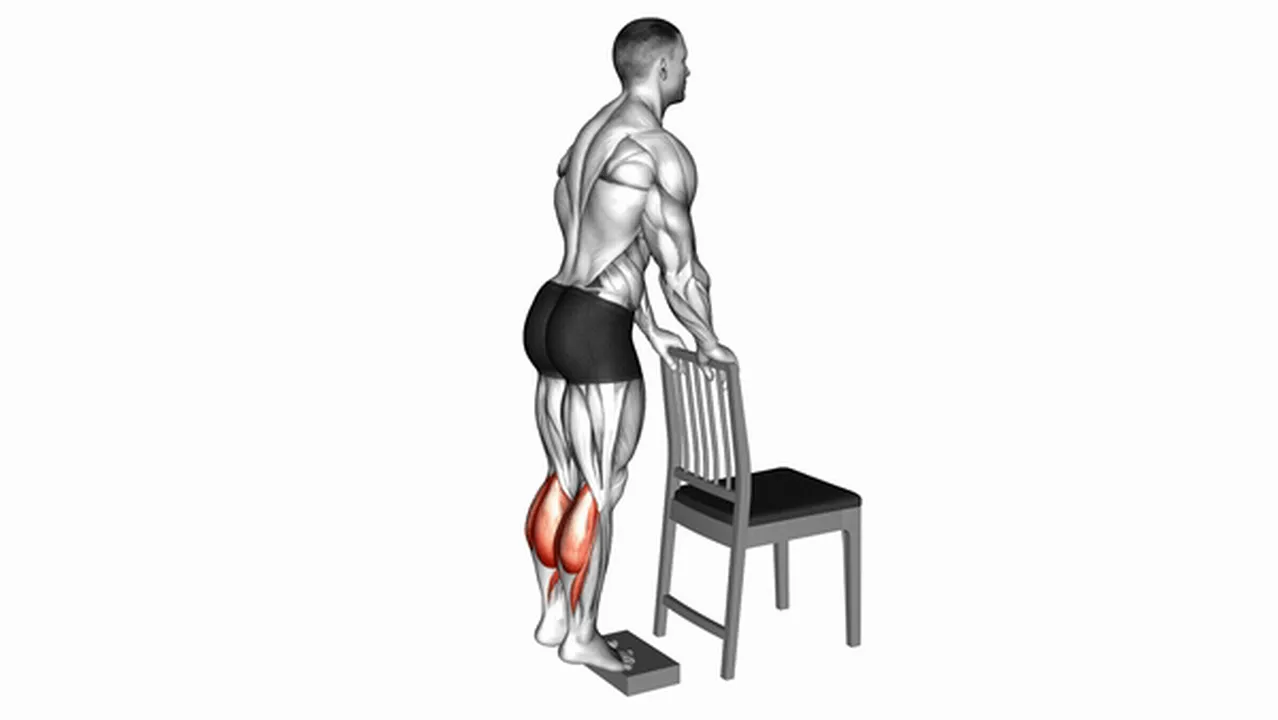
Common mistakes during calf raises from deficit with chair support
1.
Take your time: Don't rush! Slow and controlled movements help you do the exercise correctly and get the most out of it. Quick movements can lead to injury.
2.
Go all the way: Make sure your heels go all the way down and all the way up. This works your calf muscles more effectively. Shortening the movement limits the benefit.
3.
Use the chair, but don't rely on it: The chair is there to help you balance, not to do the work for you. Keep your back straight and use your leg muscles. Over-leaning reduces muscle activation.
4.
Remember to breathe: Inhale as you lower your heels and exhale as you raise them. This helps control the movement and keeps you from getting too tired.
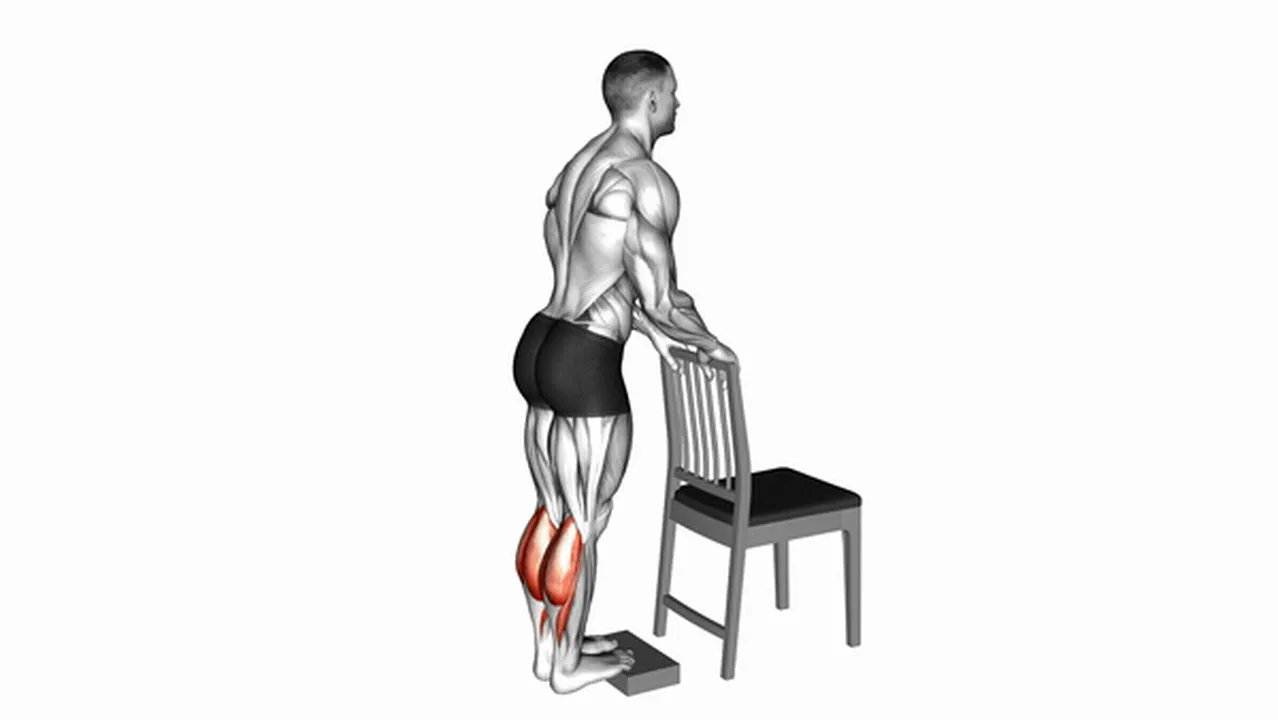
Takeaway
1.
Proper form is key: Stand on a slightly elevated surface (like a sturdy step or thick book) with the balls of your feet on the edge, heels hanging off. Place a chair in front of you for balance if needed. This starting position makes the exercise more challenging than a regular calf raise.
2.
Slowly lower your heels until you feel a good stretch in your calves. Keep your knees slightly bent to avoid locking them and putting stress on your joints. Your back should be straight.
3.
Push up through the balls of your feet, raising onto your toes. Focus on squeezing your calf muscles at the top of the movement. Control the movement both up and down; avoid bouncing.
4.
Avoid common mistakes: Don't let your knees bend too much or straighten completely. Keep your core engaged to maintain good posture. Don't use momentum to lift yourself up – focus on a controlled, powerful movement using your calf muscles.
5.
Gradually increase the challenge: As you get stronger, try increasing the height of the elevated surface. You can also increase the number of repetitions or sets you do. Listen to your body and don't push yourself too hard, especially when starting out.
6.
Consistency is crucial: Aim to incorporate deficit calf raises into your workout routine regularly to see consistent improvement in your calf strength and lower body performance. Even a few sets a couple of times a week can make a difference.
7.
Start today and experience the benefits of stronger, more powerful calves!
 Zylo AI
Zylo AI
Free Calorie
Counter
App





Disclaimer: The routines and schedules featured on our website are for informational purposes only and do not constitute medical or professional advice. Individual preferences, goals, and daily routines may vary significantly. Please note that some product links within our content are affiliate links. While not all routines have been explicitly endorsed by the individuals mentioned, we strive to ensure the accuracy and timeliness of the information we provide.
Disclaimer: Zylo AI(BR) does not provide medical advice, diagnosis, or treatment. Any information published on this website or by this brand is not intended as a replacement for medical advice. Always consult a qualified health or mental health professional with any questions or concerns about your mental health.
